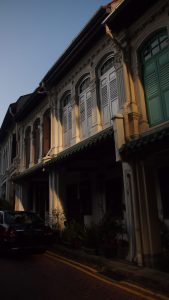Tracing Genealogies of Mixedness: Social Representations and Definitions of “Eurasian” in Singapore
September 20, 2021

Singapore has historically been home to high levels of immigration and cross-cultural marriage and partnering, with more than 20% of marriages in Singapore now classified as inter-ethnic. The term Eurasian in the Singaporean context is used to refer to those of mixed European and Asian origin. On 21st September 2019, the Eurasian Heritage Gallery (EHG) was relaunched by President Halimah Yacob to commemorate the hundredth anniversary of the European Association (EA). The EA is the administrative body for the Eurasian community which mediates between the state and the Eurasian community, and plays a key role in defining and representing Eurasian identities and interests in Singapore.
In ‘Tracing Genealogies of Mixedness: Social Representations and Definitions of “Eurasian” in Singapore’ (Genealogy, 2021), Dr Zarine L. Rocha (NUS Department of Sociology) and Professor Brenda S. A. Yeoh (NUS Department of Geography) draw data from 30 interviews with participants who identify as Eurasian to explore mixedness in Singapore from a social representations perspective. Social representations help to make sense of social structures and relations, and are useful in explaining what it means to be mixed in the specific context of Singapore. However, social representations are not always straightforward and uncontested. Since there may exist many different representations of reality, not every claim will reflect the reality that we experience.
Singapore’s history of British colonialism, migration and intermixing has had a profound impact on contemporary representations of belonging and mixedness. The Chinese, Malay, Indian, and Other (CMIO) racial framework is shared by most of the population. It does not recognise ethnic boundary crossing, and is based around singular, bounded racial identifications. The narrative of racial belonging as defined by the CMIO groupings limits the options around racial identification yet is typically accepted as the accurate and dominant representation of reality. The Eurasian community, which displays ‘mixedness’ as a key identity marker, thus clashes with this state narrative since they are comparatively harder to pigeonhole into a single group.
The boundaries of Eurasianness have expanded and contracted across colonial and post-colonial timelines. In order to fit more easily into the CMIO framework as an established and unique racial group, Eurasian identity needed to be more clearly conceptualized. Given that the Eurasian community in Singapore is particularly diverse, encompassing those coming from a wide range of cultures and heritages, the EA relied on the distinctive nature of Portuguese representations to redefine what it meant to be Eurasian. This reinforced a particular version of mixedness which was simpler to digest. In both Malacca and Singapore, markers of Eurasian identity today have created a “traditional” image based on traditions that never existed, as a way for the community to be accorded recognition and status at an official level. Thus, while the distinctiveness of Portuguese heritage has provided the Eurasian community with the necessary features to belong as a race within the Singaporean framework, this has also ended up excluding other aspects of what it means to Eurasian over the years.
Read the article here.
